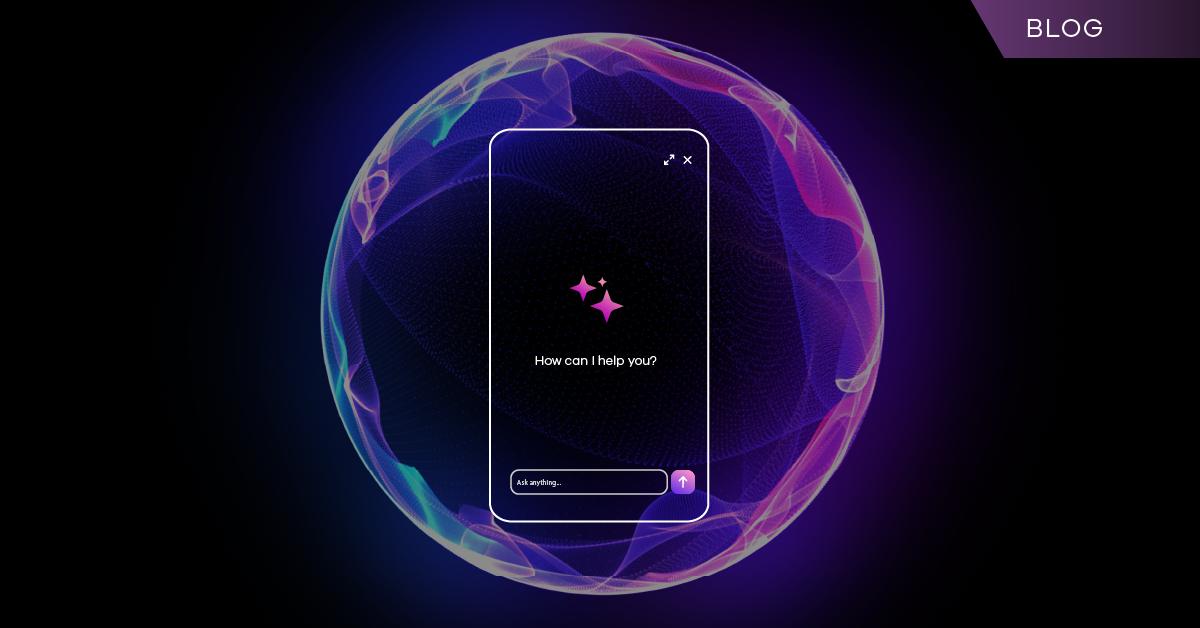In this blog we will examine:
Containerization
What is a container?
- A Container is a basic software unit that packages up code and all its dependencies so an application can run smoothly in any environment. Each container is made up of a hardware, an operating system, a container engine, libraries, and dependency’s and finally the application. Everything the application needs to run is inside the container which means it can be created and deleted quickly using automation.
- By 2025, 85% of global enterprises will be running containerized applications in production1
Container Orchestration
- Container Orchestration is the automation of containerized workloads. It is key when working with containers because it is what allows you to deploy the same application across different environments without the need to redesign it.
Kubernetes
What is Kubernetes (aka K8s)?
- Kubernetes is an open-source container orchestration software designed for deploying, managing, and scaling containers. So, what does that mean? Essentially it eliminates much of the manual processes that needs to be done during deploying and scaling containerized workloads, even across various types of physical, virtual, and cloud environments.
- According to a recent survey by the Cloud Native Computing Foundation, of the 3800 survey respondents, 96% of organizations are either using or evaluating Kubernetes2
Did you know?
- The name Kubernetes comes Greek word κυβερνήτης (kubernḗtēs) which means pilot or helmsman therefore the Kubernetes logo is a ship’s steering wheel. Kubernetes is often abbreviated as K8s because there are 8 letters in between ‘K’ and ‘S’
- Kubernetes was originally developed and designed by Google Engineers and was later donated to CNCF in 2015.
How does it work?
- Kubernetes is a concept made up of several different components, and, while there are several elements and use-cases in the implementation of Kubernetes, the main concepts to understand are: the Control Plane, Pods, and Nodes.
- The Control Plane consists of elements and API processes which coordinate workloads and communications, allowing for the smooth flow of information and resource allocation across the environment.
- Pods are the base element in Kubernetes. A Pod consists of one or more containers and are co-located on the same node.
- A Node (also known as a minion, or worker)is a machine on which containers are deployed. Each node must run a container runtime such as Docker, CoreOS rkt, Containerd, etc. Multiple Nodes can be grouped into Clusters.
Your IT environment and Kubernetes
- As a result of shifts in modern computing practices, users are expecting applications to be available 24/7 and developers are sometimes expected to be able to deploy new versions of the applications several times a day. Also, IT environments are increasingly more hybrid and based on multi-cloud approaches, integrating on-premises resources with public or private clouds from different suppliers. While container systems allowed developers to make software more portable and hold all of the packages needed to run a service, they were still limited by the amount of manual effort needed to provision and modify each container across an environment.
- Kubernetes can help organizations better manage their workloads and reduce risks. Kubernetes is able to automate container management operations and optimize the use of IT resources. It even can restart orphaned containers, shut down the ones that are not being used, and recreate them.Kubernetes automates the deployment of containers without DevOps having to move all the pieces manually themselves. This allows developers to deploy new versions of specific applications on a more frequent basis and enables them to be released and updated without downtime, even across multiple environments (i.e. Dev, Test, Prod).
Benefits of Kubernetes
- The key benefits of Kubernetes can be summarized as: reduced application development and release timeframes, optimization of IT costs, increased software scalability and availability, flexibility in multi-cloud environments, and cloud portability.
- Portable Workloads
- Because Kubernetes is an open source your workloads become portable take advantage of on-prem, hybrid, and multiple cloud environment— all while maintaining consistency across each environment.
- Flexibility
- No matter where you are running Kubernetes, it offers flexibility in hybrid and multi-cloud environments allowing operation of any of our applications in any public or private environment smoothly.
- Automation
- Kubernetes can automate containerized environments by acting as its operating system. It does this my automating the operation requirements of containerized workloads.
- Scalability and Availability
- Kubernetes can define complex containerized applications and deploy them across clusters of servers. As Kubernetes scales applications according to your desired state, it automatically monitors and maintains container health.
Kubernetes Architecture
- Kubernetes control plane: Also known as the master machine, is the container orchestration layer that exposes the API and interfaces to define, deploy, and manage the lifecycle of containers aswell as the nodes that hold the containerized applications. It ensures that every cluster is kept in its desired state.
The components of the Control Plane
- API Server: The Application Programming Interface also know as API is the front end of Kubernetes. It is where clients make an initial request for an object or a collection and it determines if the request is valid and then it will process it. The API server also is what is used to transmit, create, and configure data within K8 clusters.
- K8s scheduler: The scheduler is what watches and manages pods that are newly created and assigns them to a node so they can run on it smoothly.
- Controller manager: Within the Control Plane there are multiple controllers, they are the control loops designed to watch the state of your cluster and make or request changes as they are needed.
- Etcd: Is a data base where all your container storage is stored. It is a strongly consistent, distributed key-value store that holds and manages the critical information that systems need to run.
- Cluster
- NODE: (also known as a minion, or worker)is a machine on which containers are deployed. Each node must run a container runtime such as Docker, CoreOS rkt, Containerd, etc. Multiple Nodes can be grouped into Clusters.
- Pod: are the base element in Kubernetes. A Pod consists of one or more containers and are co-located on nodes.
- This is where all of your important information is kept
Modernize with Kubernetes
- Kubernetes makes it possible to simplify and accelerate the migration of applications from an on-premises environment to public or private clouds, offered by any provider. Applications can be migrated to the cloud through the adoption of various methodologies:
- the simple transposition of the application, without any coding changes (Lift & Shift);
- the minimum changes necessary to allow the application to work on new environments (replatforming);
- the extensive rewriting of the application structure and functionality (refactoring).
- Modernize your environment more smoothly than ever before with Kubernetes adoption. No need to ask yourself where your data is anymore, all your data is stored in one place. Kubernetes storage is based on volumes. The volumes can either be persistent or non- persistent. Inside the pods, containers request for more storage.
- Kubernetes can be built once and then is able to be deployed anywhere. This means no matter where you build your cluster whether it is on prem or in the cloud you don’t need to rebuild the solution you just have to deploy a different cluster.
Challenge
- Kubernetes clusters can be prone to ransomware attacks, like any other workload. In some cases, a hacker can gain access to what is inside of your pod – potentially receiving critical information about your organization. Therefore, backing up and having data protection for your clusters is vital when it comes to moving your workloads around.
Kubernetes Backup
- Is the process of backing up all of the components that run in a Kubernetes orchestration platform, which include all of the organizations containerized applications. Since a Kubernetes cluster has so many components, pods, nodes, control plane and volume, each of them needs a level of protection. Protection is critical for a cluster especially since organizations are relying more and more on Kubernetes. Backing up a Kubernetes cluster will ensue that the data, configurations, and the files are protected from any attack. This is why you need a solution that has the ability to back up your entire cluster.
- The main stages of Kubernetes back up include:
- Discovery
- Identify resources
- Backup
- According to Red Hats 2022 State of Kubernetes Security Report, 93% of respondents experienced at least one security incident in their Kubernetes environments in the last 12 months, sometimes leading to revenue or customer loss3
Commvault and Metallic’s Kubernetes Backup
Commvault and Kubernetes Data Protection
- Commvault has the ability to back up your entire cluster unlike most solutions that can only back up your containers. Commvault provides data protection for persistent storage in your stateful applications. Commvault’s solution automates back up of this data all from a single platform that increases the visibility and management capabilities of your entire environment. Our solution gives you the flexibility to migrate and deploy containers from on-prem to cloud, cloud to cloud and even back on- prem seamlessly with ease. It also offers broad support for VMs, data services and cloud services in a single platform. It is also compatible with all CNCF- certified distributions and integrated with CSI for snapshot-based backups.
- Commvault has been recognized by the 2022 GigaOm report as a “leader and outperformer” in Kubernetes data protection for our flexible deployment architecture and single interface across multiple deployments. The report also states that our security and ransomware controls are extensive which makes it suitable for larger enterprises.
How Commvault does it
- Commvault schedules a temporary worker pod to perform data movement. The settings specify a private container registry where you store an image that Commvault can download. It allows you to consolidate clusters, simplify cross-cluster migration, and streamline cluster lifecycle management.
Challenges before Commvault
- Before Commvault organizations had to deal with cluster sprawls, having to manage their cluster life cycles and consolidating clusters. Commvault helps with these challenges by allowing you to migrate your Kubernetes applications to any cloud with ease.
Metallic and Kubernetes backup
- Metallic offers VM & Kubernetes Backup. This is the only SaaS data Protection service that offers a full range of hybrid workload coverage ensuring your containers are always safe.
- VM & Kubernetes Backup by Metallic is a solution that allows you to simply extend to containers to modernize apps with confidence all while being able to protect traditional apps. Whether you are on-prem or in the cloud, Metallic supports all Cloud Native Computing Foundation certified Kubernetes distributions such as Azure Kubernetes Service (AKS), AmazonEKS, Vmware, Rancher, and many more.
- Metallic can protect Cloud or On-prem Databases, Source code control systems, Image registries, and Cloud-native object storage.
- With this solutions unmatched flexibility, Ultimate Security, and Hassle-free management consider all your workloads covered.
Conclusion
Kubernetes is the future, the time is now to make sure all of your workloads are protected and have the ability to migrate safely to the cloud. Commvault is the easy choice. We were named a leader and outperformer in the 2022 GigaOm report on Kubernetes data protection because of our broad workload support, compatibility with CNCF certified distributions and extensive ransomware controls. So pack your bags, the ship is setting sail for the cloud today.
References
1. Best Practices for Running Containers and Kubernetes in Production – 4 Aug 2020 – Gartner ID G00730344 – 2. CNCF 2021, Annual Survey – 3. Red Hat 2022, State of Kubernetes Security Report


